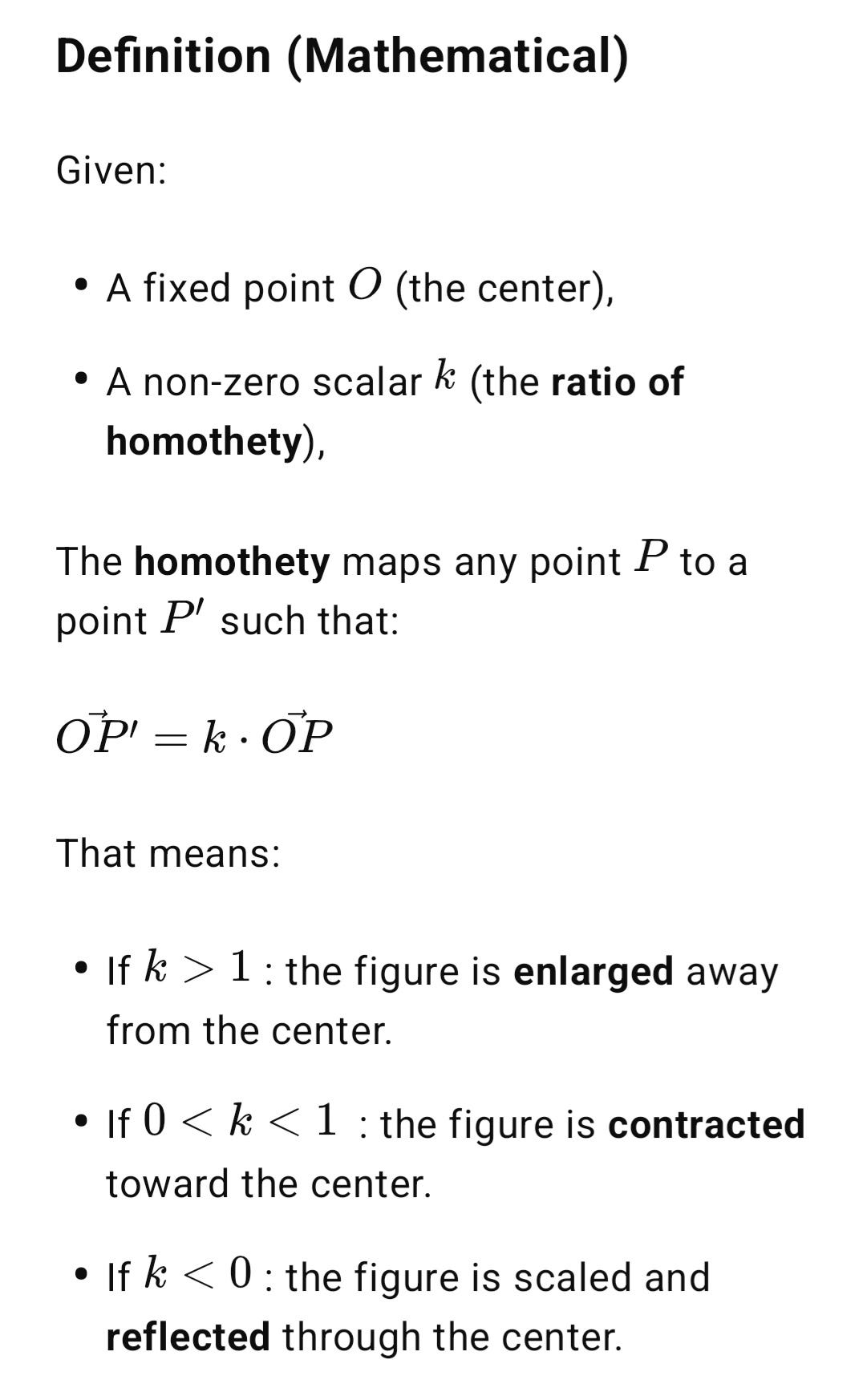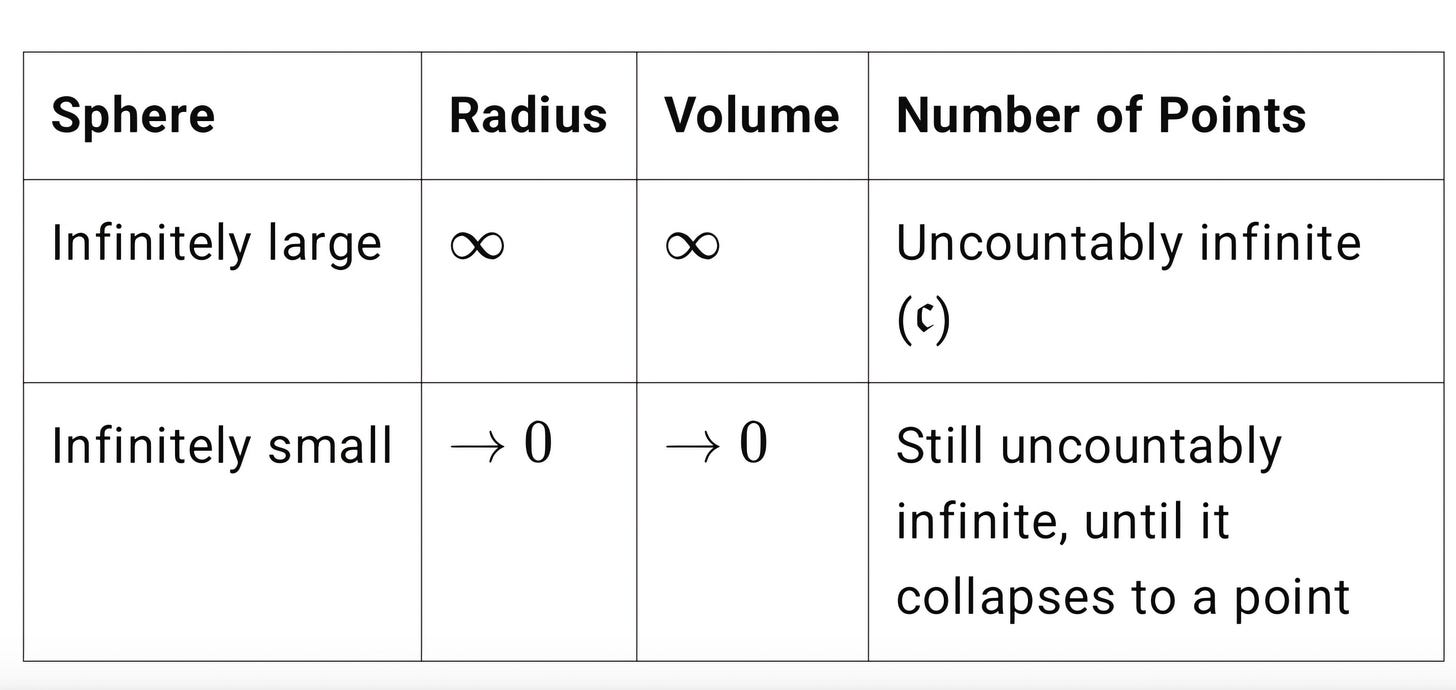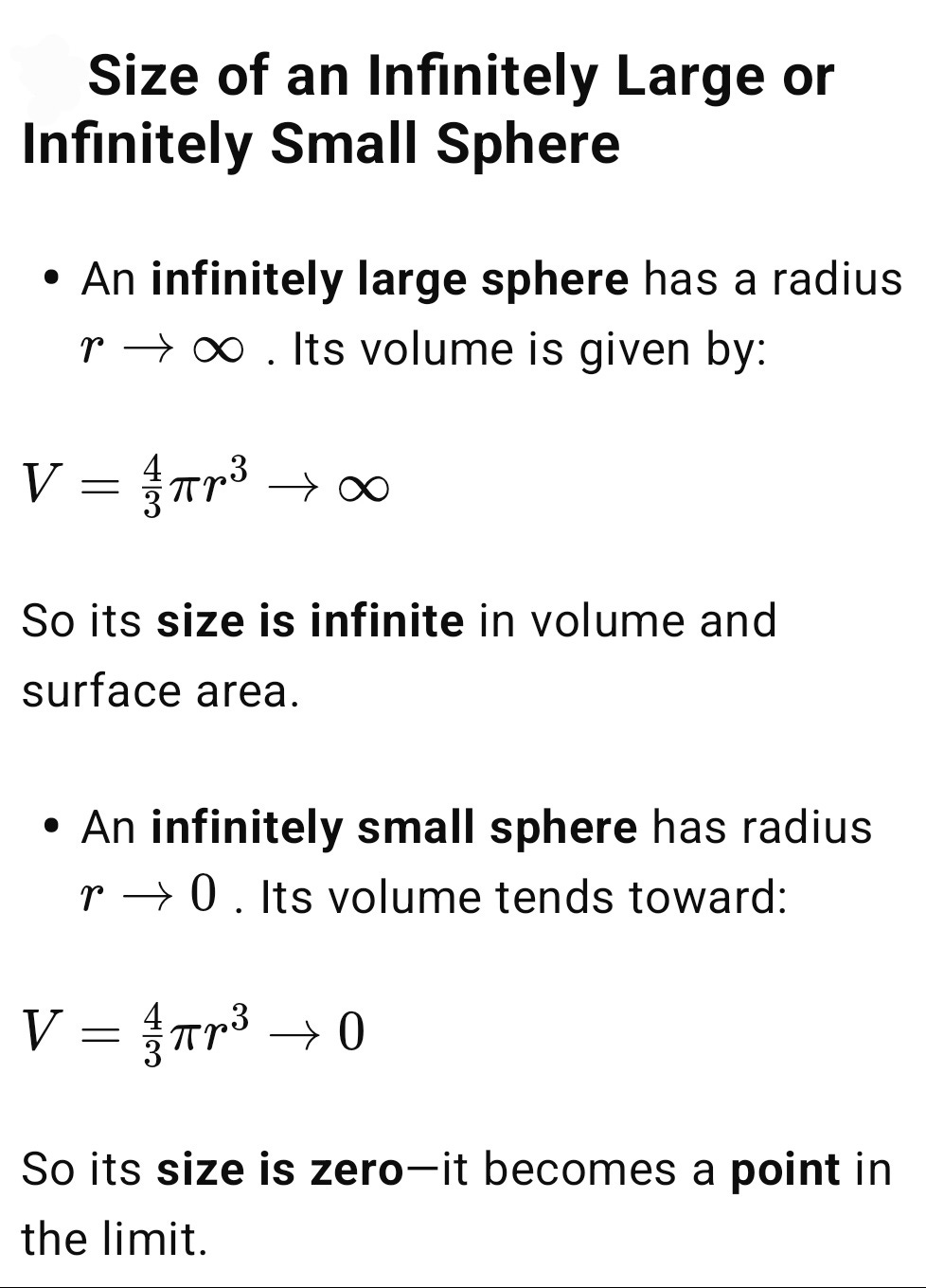Homothetic Relativity
the paradigm that without a self-conscious biological body, the measurement of the material universe precedes the consciousness of the being ?
If there is no reference scale such as the human body, can homothety¹ exist in a perpetual motion between the infinitely large and the infinitely small ?
100% organic writing♧
[1] Homothety (or homothetic transformation) is a concept from geometry that refers to a scaling transformation where figures are enlarged or reduced uniformly from a fixed point, called the center of homothety.
Applications
Geometry: Constructing similar triangles, tessellations, fractals.
Architecture & Design: Scaling objects while preserving proportion.
Physics: In self-similar systems (e.g., cosmological models).
Differential Geometry: A vector field is said to be homothetic if it generates scaling symmetries of the metric.
38.2% organic writing♧
61.8% synthetic writingⁿ
Scale Invariance
Without a fixed reference like the human body, homothety becomes an open continuum, where proportion no longer implies comparison but instead a dynamic tension between scales.
Scale becomes relative. In such a context, a homothetic transformation doesn't have a meaningful "endpoint"—you can always go larger or smaller by any factor , and nothing breaks the chain.
It forms a perpetual transformation loop, not fixed to any anchor, but always in transit—from cosmos to quark and back.
In a purely theoretical or abstract geometric framework, homothety can indeed be conceived as a perpetual oscillation or flow between the infinitely large and the infinitely small, especially if there is no absolute reference scale like the human body to anchor proportion.
Limits of Physical Reality
In physics, there's a lower bound (Planck length) and potentially an upper bound (observable universe). But conceptually, in mathematics or speculative metaphysics, homothety is unbounded—it can slide continuously between extremes.
Fractal geometry, where structures repeat self-similarly across scales.
Conformal field theory, where scale invariance plays a foundational role.
Some cosmological models, which explore self-similarity across epochs of expansion or contraction.
If there’s no privileged scale, then proportion becomes a metaphysical flow rather than a spatial condition. Homothety turns into a kind of ontological recursion, where every structure implies a larger and smaller version of itself.
Leibniz’s monadology, infinite complexity nested within each point.
Eastern philosophies, notions of microcosm and macrocosm mirroring each other infinitely.
What is the size of an infinitely large sphere and an infinitely small one, and how many points does each contain ?
How Many Points Do They Contain?
Here’s the counterintuitive part from set theory and geometry:
Both the infinitely large and the infinitely small sphere (even a single point!) are made of uncountably infinite points.
In Euclidean space:
Any sphere in R³, regardless of size, contains continuum many points—the same cardinality as the real numbers, .
Even a point is considered a singleton set, but the number of points within any non-zero volume is always uncountable.
If the sphere collapses completely into a single point, then it contains exactly one point. But any non-zero-radius sphere, no matter how small, contains uncountably many.
This reveals something profound: "size" and "cardinality of points" are not the same thing. A universe the size of a grapefruit and one the size of a galaxy could both be made of the same "quantity" of mathematical points, despite radically different scales.
In a scale-invariant system, infinity and nothingness may touch—the infinite small and infinite large converge through homothety.
100% organic writing♧
The three-dimensional space in which we live (plus the time dimension) can only be perceived through its interiority and not as an object.
Yes, we have the perception that objects surrounding us are in 3 dimensions, even a leaf.
We see them from a perspective external to them.
But the space in which we live is a field extension that goes from the ground to the sky and extends endlessly horizontally, being a spherical surface (without edges or frame), meaning what we perceive is a negative¹ or void and not a three-dimensional object.
*********
[ Essential clarification:
this negative¹ is not pejorative, it is merely the interior side of an object, whose exterior side is positive.
Example of an artificial object is a cup.
Is the cup the volume or the void it creates?
Exterior is the positive and the interior is the negative.
Biological example of sexual anatomy, the masculine (positive/volume/full) and feminine (negative/space/void).
Example of mineral surface like soil where what is removed from a hole forms the positive (removed earth forms a mound) and the created hole forms the negative (absence of the excavated earth)].
***********
To have an object perception of this negative we have to go to orbital space at a sufficient distance to see the totality of the three-dimensional object that is a sphere.
This reveals that our three-dimensionality is actually on a spherical "two-dimensional" surface, but whose thickness is greater than zero, thus forming a kind of negative of what we experience when at ground level.
Because what we feel is that we live in a "house" without walls and not that we are on top of a sphere.
We feel the negative space and not the positive which is the earth object.
Now regarding the universe and its cosmic totality, it is another three-dimensional negative space that we cannot see as an object.
Thus we say it is infinite void.
We can conceptualize its geometric finitude but never perceive it as an object.
We can conceptualize its surface of complex geometry as a thickness equivalent to the thickened terrestrial surface, but not visualize an objectual formalization exterior to ourselves.
In cosmology there is however a model of the universe object that delimits its form by the measurable limit where the light of galaxies does not "pierce" the barrier of darkness given that the recession velocity is superior to that of light itself.
This creates a kind of formal membrane as happens in biological objects or beings.
But it is impossible for us to one day observe as being on the exterior of its dimension, as we experience seeing the earth or the sun and other galaxies.
The cosmic universe is then a spatial "negative object" with infinite surface but with exteriority beyond visible light.
I would say that "all" this three-dimensional complexity or "thickness" will only be possible to "see" as an object in the fourth spatial dimension and more than one temporal dimension.
Simplifying.
In 4D space (negative) we see the (positive) object of 3D space.
In 3D space (negative) we see the (positive) object of 2D space.
In 2D space (negative) we see the (positive) object of 1D space.
In 1D space (negative) is generated the multiplication of infinite (positive) points that form the thickness of the discrete space of (0)zero D.
The void as discrete and non-continuous space from which all dimensions emerge in their Thicknesses.
…
WIP
I will continue with its continuity in due time, if you are curious, come back anytime, thank you.







